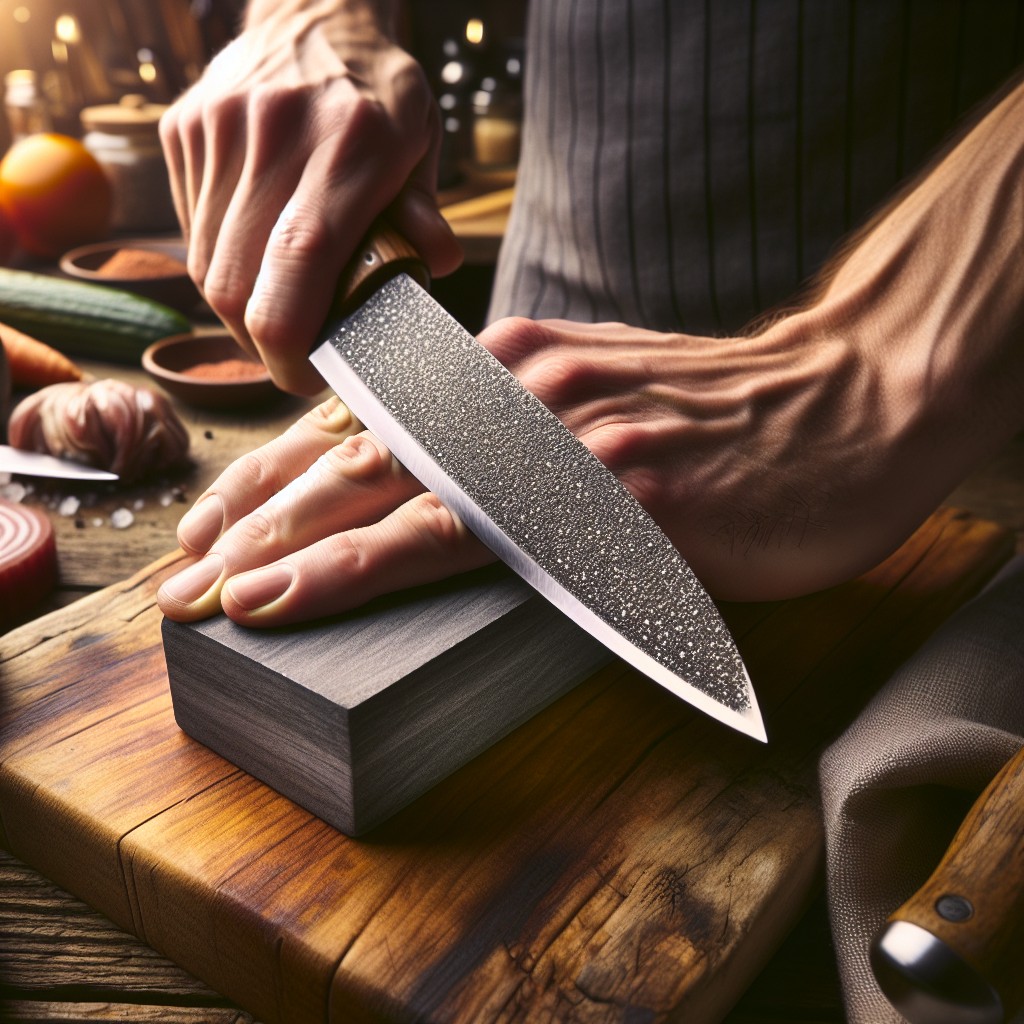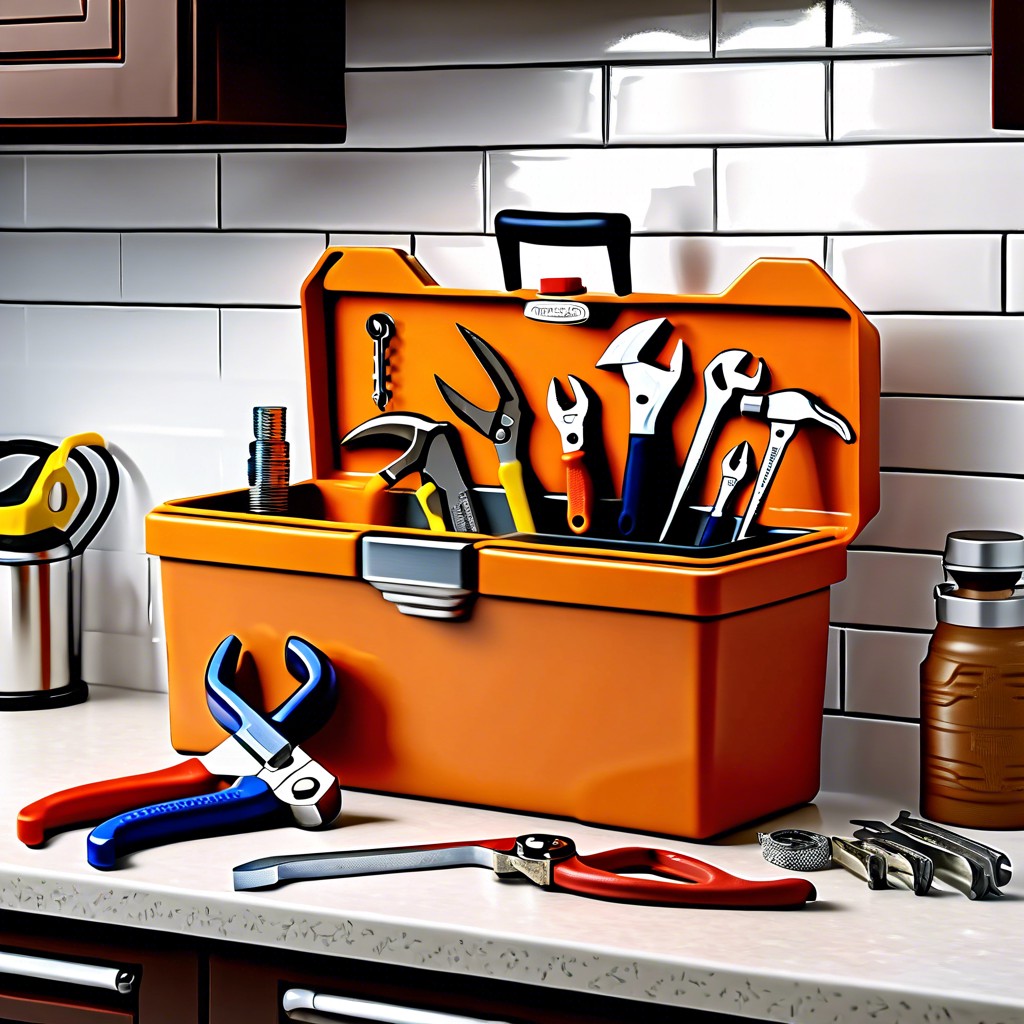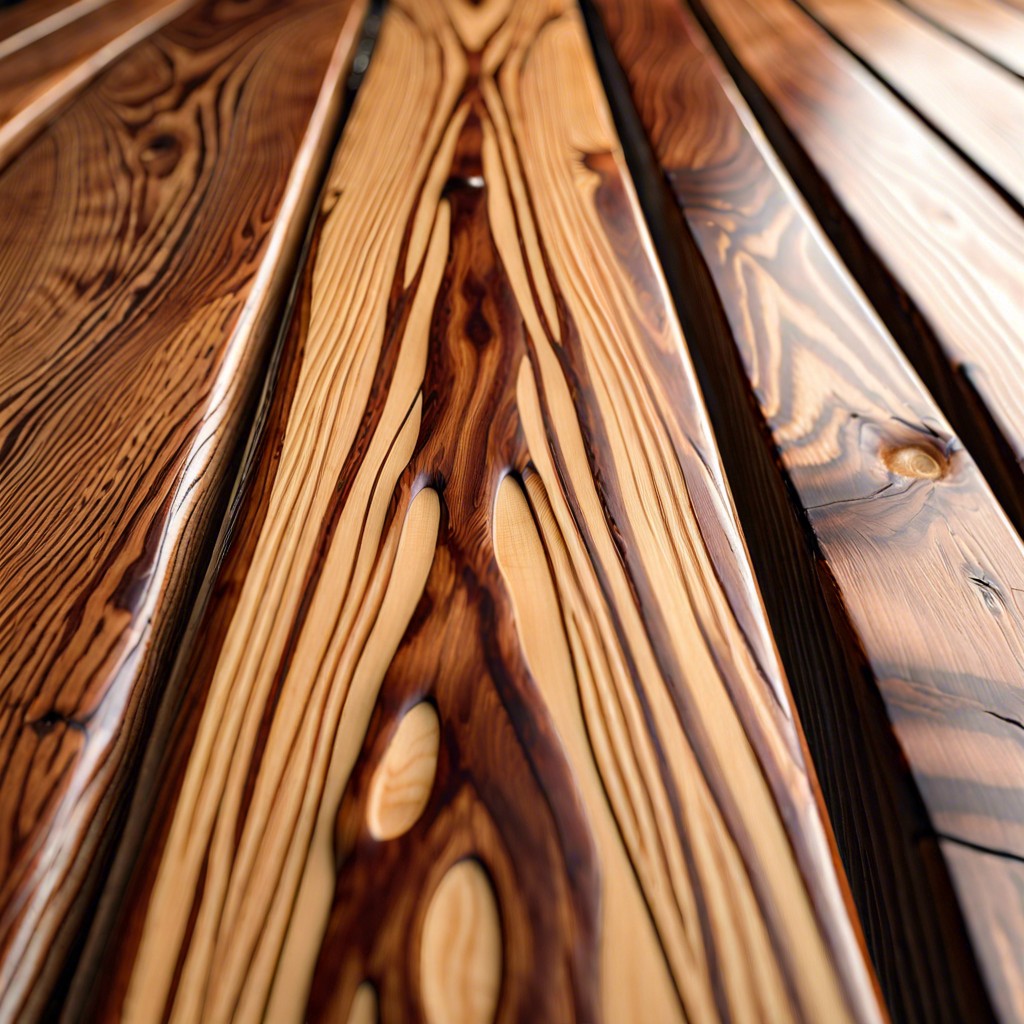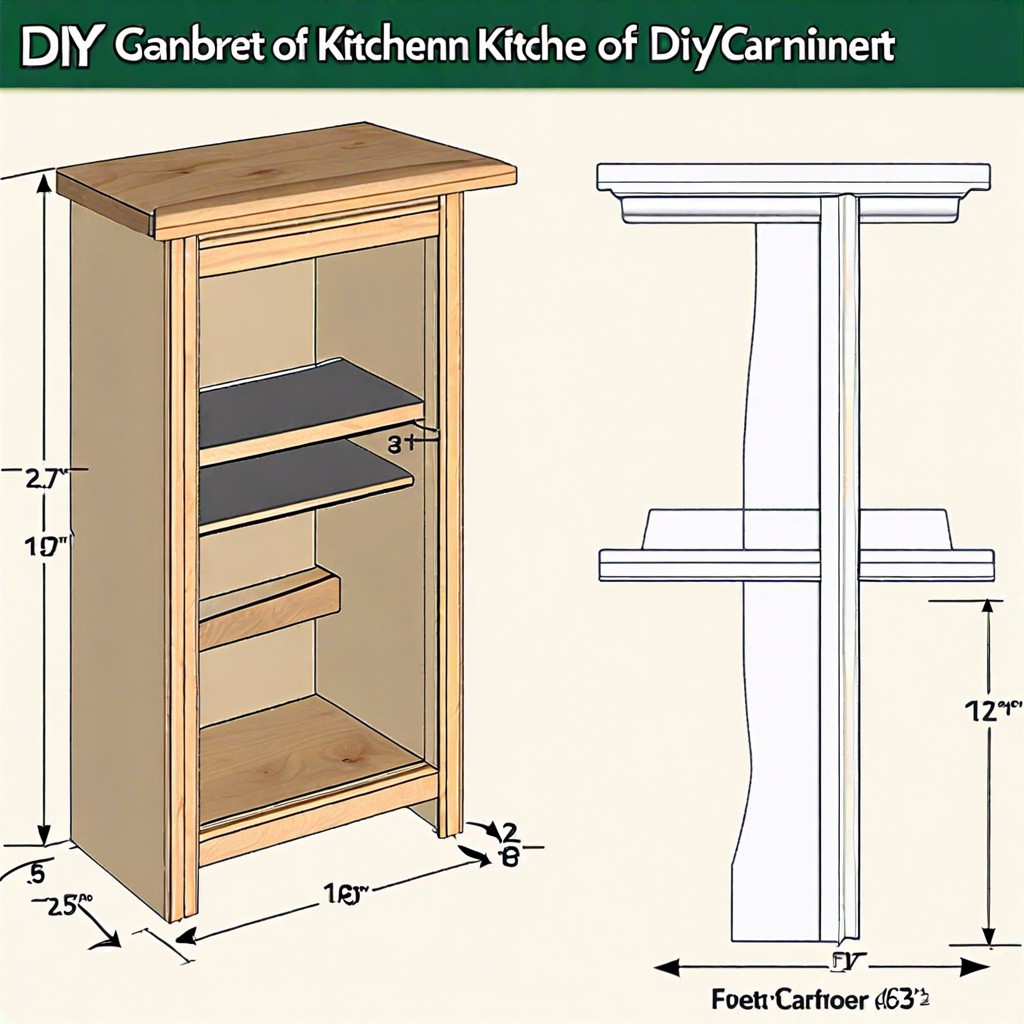Last updated on
This article offers practical guidance on sharpening a knife effectively and safely, including comprehensive steps and useful tips.
Key takeaways:
- Select the right sharpening stone for your needs.
- Master the correct sharpening angle for different types of knives.
- Start with the coarser grit side of the stone for foundation.
- Refine the edge using the finer grit side of the stone.
- Properly care for your knives between sharpening sessions.
What's Inside
Selecting a Sharpening Stone

Navigating the myriad options for sharpening stones can be as complex as the variety of knives out there. Think of it as matching the right tool to the task. A water stone, known for its rapid cutting speed, is fantastic for beginners. You’ll find them in various grits – the lower numbers are coarser, cutting quicker but leaving rougher edges; as the numbers climb, grit become finer for honing a clean, sharp edge.
Diamond stones, a bit pricier, excel in durability and maintenance ease. Their metal plates coated with diamond particles ensure they stay flat over time and offer consistent sharpening.
Ceramic stones are the long-haul companions in your sharpening journey – hard and durable, they often require a submersion in water before use to fill their pores for smooth action.
And let’s not overlook oil stones, the traditional choice that has stood the test of time. Usually crafted from Novaculite, they sharpen well but demand more cleanup due to oil usage.
Your choice should reflect your tools and patience level. A coarse grit is pivotal for restoring neglected blades, while finishing with a fine grit polishes and perfects the cutting edge. Starting with a two-sided stone, one coarse and one fine, could be the most economical and versatile option for your sharpening needs.
Finding the Correct Sharpening Angle
Mastering the angle between the blade and the stone is pivotal for an effective sharpening process. Here’s a quick guide to nail it every time:
- General Rule-of-Thumb: A 20-degree angle is standard for most kitchen knives; a more acute 10-15 degrees for razor-sharp fillet knives, and a sturdier 25-30 degrees for outdoor or hunting knives.
Visualize the Angle: Imagine the blade is cutting through a thin slice of lemon upon the stone – that’s approximately the angle you’re aiming for.
Use Guides: If you’re a beginner, consider using an angle guide. It’s a simple tool that holds the knife at the proper angle for you.
Consistency is Key: Once you find your angle, keep it consistent throughout the sharpening process. Muscle memory will play a big role in this, and with practice, maintaining the angle will become second nature.
Check Your Progress: After a few strokes, look at the blade. A consistent angle will reveal an even sharpening pattern across the edge.
Follow these tips, and you’ll maintain the perfect angle, leading to a sharper and more durable knife edge. Remember, it’s not just about getting it right once but maintaining that consistency with each stroke.
Starting With the Coarser Grit Side of the Stone
Embarking on the sharpening process with the coarser grit is akin to laying down the foundation of a house – it’s essential for establishing the basic shape and edge of your blade. This grit, often ranging from 400 to 800, is designed to remove old steel and any nicks or imperfections, efficiently paving the way for finer honing.
- Start with a stabilised stone, ensuring it won’t slip.
- Hold the knife at the proper angle, typically between 15 to 20 degrees, and use gentle, even strokes.
- Sweep the blade across the stone in a motion that resembles cutting a thin slice from the stone.
- Maintain consistent pressure and angle to avoid uneven sharpening.
Periodically, wipe the blade and stone with a damp cloth to remove metal filings that accumulate, as these can affect the sharpening process. This initial stage does not yield a razor-sharp edge but sets the stage for the finer grit to perfect the knife’s sharpness.
Refining the Edge With the Finer Grit Side of the Stone
Once you’ve established a burr along the entire edge using the coarser stone, transitioning to the finer grit is like perfecting the art. The goal is to polish and refine the edge you’ve just formed, not to grind away more metal than necessary.
Imagine fine-tuning a pencil tip rather than carving the wood. With gentler strokes, you glide the knife over the stone, maintaining the same angle you so carefully found earlier. The movement is similar to spreading butter on bread—smooth and intentional.
Consistency is key. Repeat the process as you did with the coarser stone, counting the strokes and making sure to apply even pressure throughout. The number of strokes can be fewer; you’re smoothing, not shaping.
You’ll know you’re on the right track when the knife’s edge starts to reflect light, a sign of its growing sharpness. Tiny metal filings, less pronounced than before, will be visible, a testament to the stone’s fine-tuning prowess.
Lastly, remember the importance of water or honing oil to maintain the stone’s efficacy. A well-lubricated surface not only ensures a keen edge but also prolongs the life of the stone, making it a trusty companion in your sharpening endeavors.
Caring for Your Knives Between Sharpening Sessions
After honing your knife’s edge, proper maintenance is crucial to keep it in optimal condition. Always use a cutting board – preferably wood or plastic – to avoid dulling the blade. Marble or glass surfaces are harsh on knife edges.
Wash knives by hand with warm soapy water, as dishwashers can cause banging that dulls the edge. Dry immediately to prevent rusting, particularly if the knife is not stainless steel.
Storage is also important. Avoid tossing knives in a drawer where they can get chipped or dulled; instead, use a knife block or magnetic strip. If a drawer is the only option, sheaths or blade guards can offer protection.
Regularly using a honing steel helps maintain the edge between sharpenings. Remember, a well cared for knife makes the task of sharpening less frequent and far easier when the time comes.




